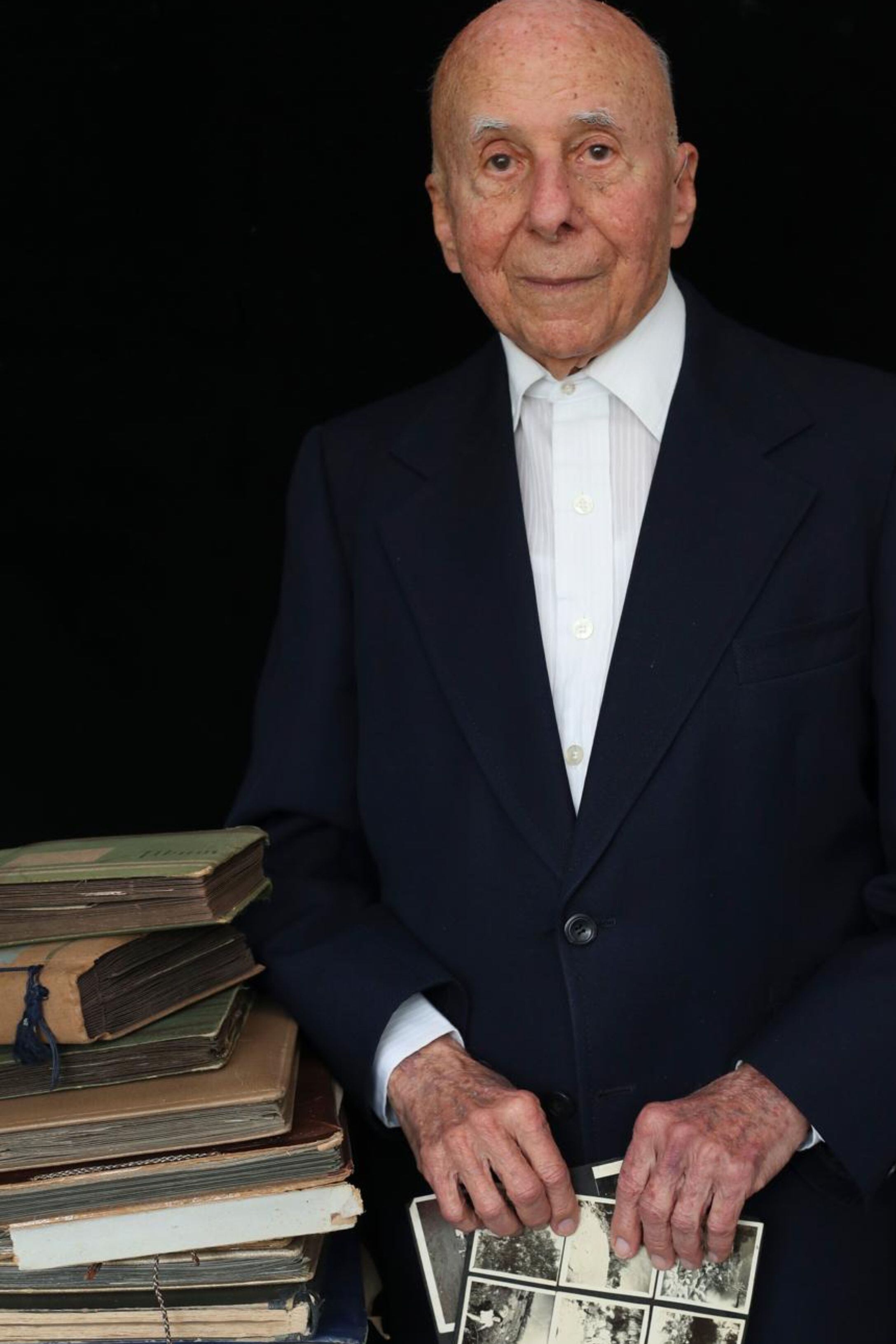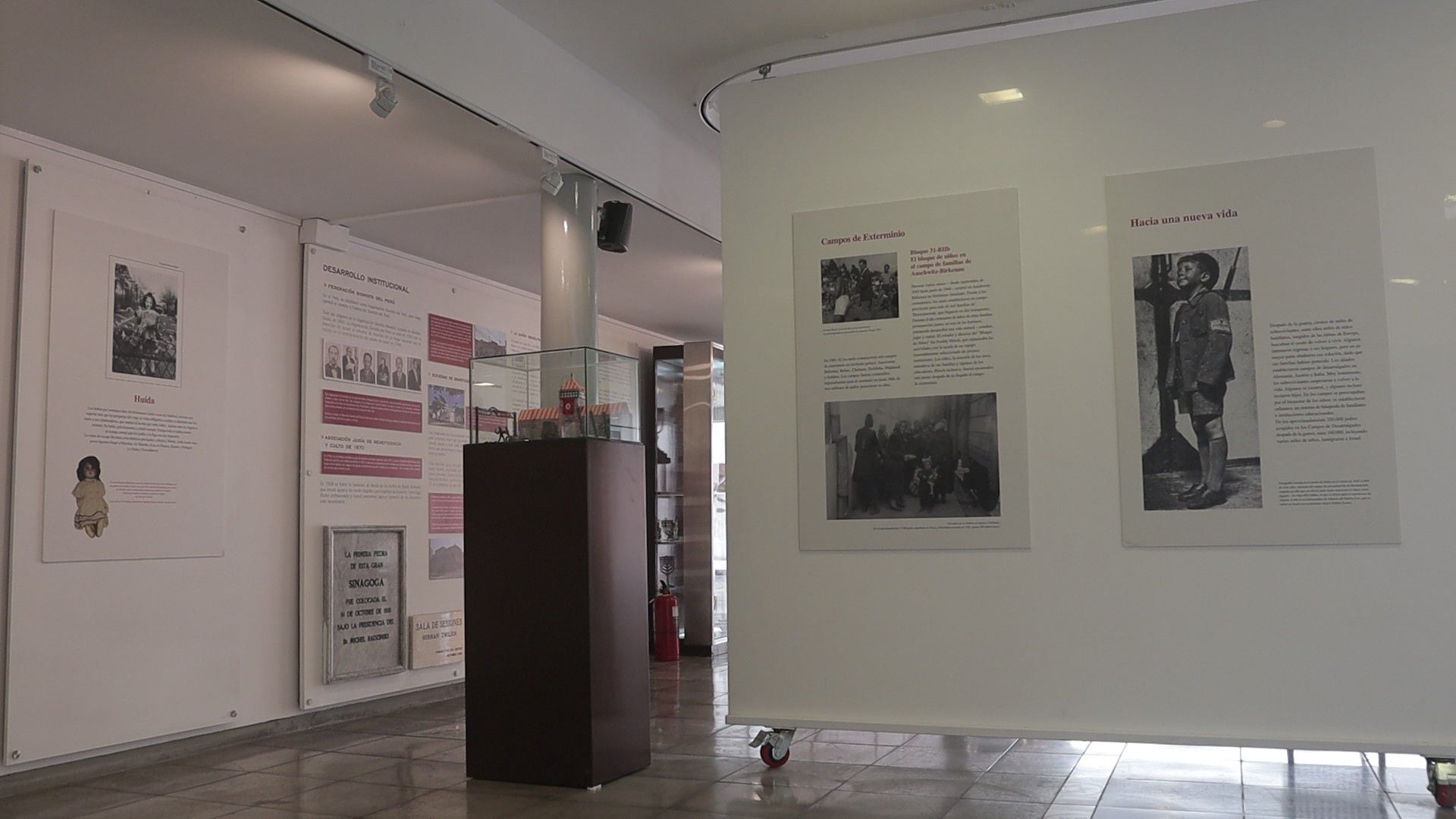It was the night of November 9, 1938. Little Lothar Rosenmann was at home in Berlin, with her mother Leontina and her sister Edith. Suddenly, the sound of a great machine broke the tense calm that reigned over his block. “We went to the front window to look out onto the street. At that I saw that a police car was coming, one of those big, open, black cars, with some men also in black uniforms. They went down, broke the door of the front house, went up to the second floor and came down with two old men. And they threw them in the car”, Recalled Lothar for El Comercio in 2019.
SIGHT: “They emptied all women so they would not have children”: the story of the 11 Spanish women who survived the horror of the Holocaust
He did not know it yet, but he was witnessing the beginning of the Night of the Broken Glass, considered the starting point of the most cruel stage in the already devastating Jewish Holocaust.
- US: legislator apologizes for comparing the use of masks to the Holocaust
- Pope Francis kisses the number tattooed on the arm of a Holocaust survivor
- Jewish Holocaust: Three Survivors of Nazi Terror Living in Peru
The next day, little Lothar got up earlier than the rest of the family, got ready and went to school. For several years he had not been able to play with the rest of his classmates, they had had to change schools (to a special one for Jews) and when he returned home he had to take other routes. But he still liked going to school.
He got off the train, walked a few steps, and froze. “All the tents had smashed windows, with anti-Semitic inscriptions and to the left I saw fire. They had burned down the synagogue”, He recalled during interviews for the documentary Survived the Holocaust, produced by this newspaper.
TOTAL DESTRUCTION
The night before, when the old men had been thrown into that huge truck, a brutal persecution against Jews had been unleashed throughout Germany. It was a new step in the ethnic purification strategy developed by the Nazi regime. Propaganda Minister Joseph Goebbels had taken it upon himself to organize the plan step by step.
In total, 250 synagogues were burned in the country, dozens of Jews were murdered, and cemeteries, hospitals, schools and homes of members of that community were looted. In addition, more than 7 thousand businesses were destroyed. The latter was what led to that night being remembered as Kristallnacht, or Night of the Broken Crystals, in Spanish.
A man found little Lothar petrified and told him to get home as fast as he could. He did not hesitate and ran to catch the train back. Upon returning, however, the chaos continued.
“With a red enamel letter it said: ‘Jewish Rosenmann’ with the arrow pointing to the entrance to our building”, He remembered. That same day Lothar and his family fled Berlin and less than two months later they had arrived in Peru, where they would start a new life.
However, not all suffered the same fate. According to the Encyclopedia of the Holocaust, some 30,000 German Jews were arrested on November 10 of that year and sent to concentration camps. The only businesses that could open their doors were those that were not owned by a Jew. Curfews were imposed on them and the community was fined 1 billion marks, equivalent to 400 billion dollars at that time.
When Lothar and his family left Germany, he was just 12 years old. They arrived in Peru by luck, after his mother chose him at random on a map they had at home; They did not know Spanish and few things interested him as much as his toys.
Lothar Rosenmann passed away on August 22, 2020, just days before his 94th birthday. He had developed professionally in our country, married, had children and had been sharing his story with groups of students for a couple of years at events organized by the Centro Educacional Holocausto y Humanidades del Perú (CEHyH).

STOLEN CHILDREN
Patricia Flowers is the director of this institution founded in 2014 by Lilach Aviram and Mirta Glasman. Since then, the place located in the district of San Isidro has been in charge of preserving, spreading and educating about the Shoah to schoolchildren, university students and the general public interested in learning more about that dark time.
Like the rest of us, the COVID-19 pandemic forced them to close their doors for several months. But far from giving up, Flowers explains, they decided to see it as a new beginning.
So while they continued with their programs for school and university students through the Zoom, they renovated and modernized the center, redistributed the pieces and chose a representative sample to exhibit in this new stage.
“It’s not child’s play”Is the name of the exhibition currently exhibited by the CEHyH. For Flowers, this tour brought from the Holocaust Museum in Jerusalem “Yad Vashem” is quite special because it was the first they had in the center and allowed them to receive more than 1,800 people during its opening year.
The exhibition is a journey through the stories of Jewish girls and boys who suffered under siege by the Nazis during the years in which the Holocaust spread. Flowers explains in detail the path these minors had to follow, accompanied by moving photographs and interesting articles, such as a Monopoly board drawn by a boy and his father while they lived in seclusion in a ghetto.
The streets of the game are the same as the neighborhood where they were confined.
“You are going to feel how these toys meant a lot to these children. How they told their stories, how they suffered with them”, Explains the director of the center.
Visits to the CEHyH, although still limited, are possible by prior registration at [email protected].

- Germany registers record of coronavirus infections and more than 200 deaths
- The country in Europe that celebrated the end of the pandemic and now reimposes the Covid pass
- Which countries do not recognize the re-election of Daniel Ortega in Nicaragua and which ones congratulate him
- Why is it so difficult for the United States to reconcile with France?
- She donated her deceased husband’s body for science, but they used it on a show
.

:quality(75)/cdn.jwplayer.com/v2/media/eKty0tN2/poster.jpg)





